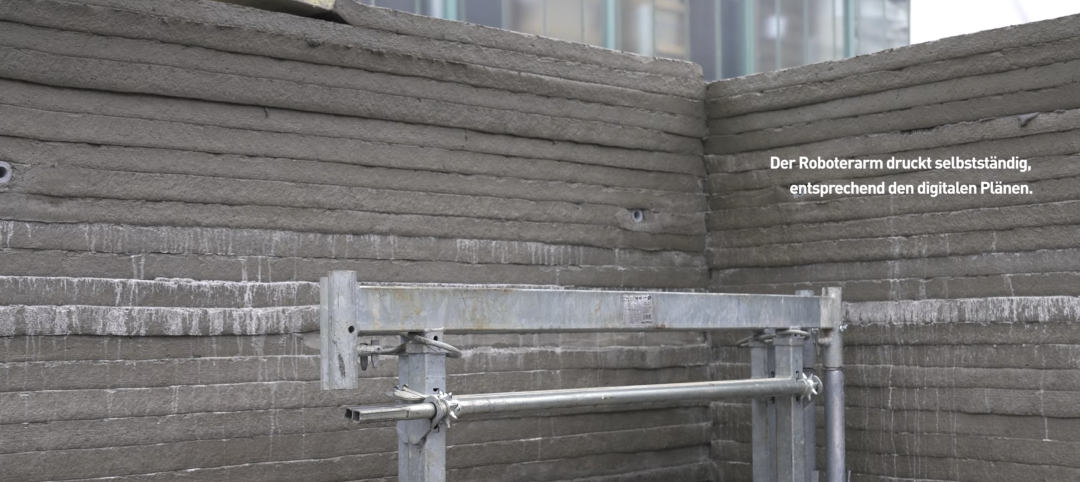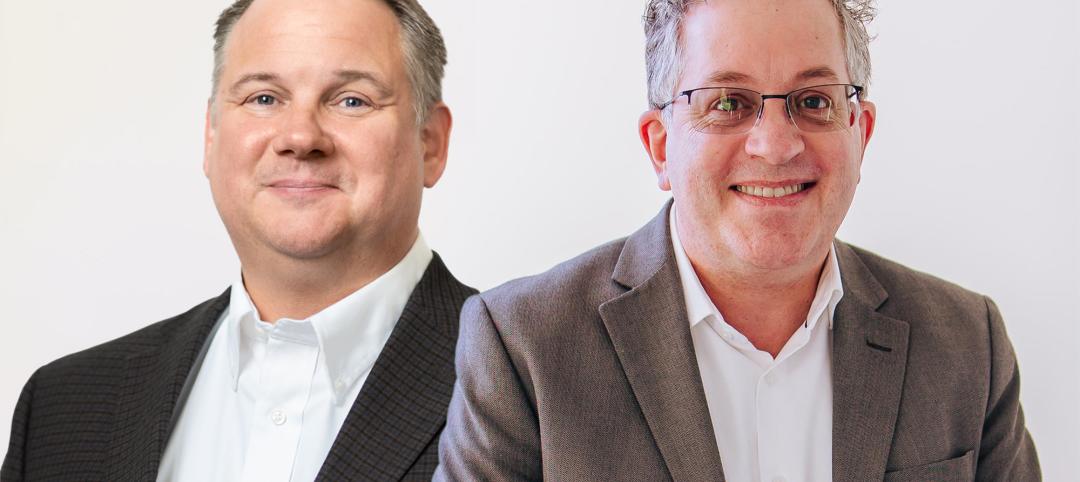Healthcare architects from around the country gathered in Chicago in late July for the annual Summer Leadership Summit of the American College of Healthcare Architects and the AIA Academy of Architecture for Health.
Deborah J. Bowen, FACHE, CAE, set the tone with a warning that healthcare construction will continue to feel the effects of radical changes in the delivery of care: the shift from fragmented, episodic treatment—treating sickness in individual patients—to coordinated, longitudinal care—achieving wellness at the community level, primarily through the construction of satellite outpatient facilities.
Hospital-oriented care, with an emphasis on managing individual departments, is being largely replaced by community-based outpatient care, grounded in systems thinking and integrated processes, said Bowen, President/CEO of the American College of Healthcare Executives. “What worked in past years may not work in the future,” she said.
More than half of adults have at least one chronic condition, and more than three-fourths of healthcare costs are spent treating chronic ailments. Even as aging baby boomers swell the Medicare rolls, Medicare funding will be cut back $155 billion over the next decade.
No wonder that an ACHE survey of hospital CEOs found (for the second year in a row) that their chief worry is finances, followed by healthcare reform and government mandates—both responses to the Affordable Care Act (ACA). Patient safety, quality, and satisfaction ranked much lower for CEOs.
To cope with financial stress, 70% of CEOs surveyed by ACHE said they anticipate being in some sort of strategic alliance in the next 12 months. “Size and scale matter, which is why Kaiser Permanente and the Cleveland Clinic are so successful,” said Bowen.
Must hospitals be so noisy?
No, said anesthesiology/intensive care physician Paul Barach at the ACHA/AAH Summit. The average noise level in U.S. hospitals has risen from 40 db in the 1960s to 60 db today.
Noise, especially at night, disturbs patients’ REM sleep and their ability to heal. It can also lead to “active errors”—incorrect medications or dosages, for example—by nurses and physicians, said Barach, President of J. Bara Innovation, a healthcare consultancy. To reduce noise, hospitals in Europe have gone so far as to do away with public address systems.
The hot new term in healthcare delivery: “population health,” or, as Bowen put it, “thinking outside the bed.” The biggest contributors to premature death are behavioral traits (obesity, smoking, physical inactivity, aging), 40%; genetics, 30%; “social circumstances” (i.e., poverty), 15%; and environmental
exposure, 5%. Healthcare intervention accounts for only 10% of the equation. “Population health” seeks to increase the effectiveness of healthcare delivery, said Bowen, by “thinking more about the whole person”—helping the elderly get to the pharmacy for prescripton refills, encouraging greater compliance among patients with chronic conditions. Outreach facilities that provide daily care to geriatric patients will become more prevalent, she said.
Healthcare architects will be called upon to design spaces that are welcoming, promote healing, and lead to high patient-satisfaction scores. Controlling noise, improving wayfinding and visibility, and providing comfortable spaces for patients and their families—with pullout beds, individual lighting, lots of natural light—will become standard, said Bowen.
California’s Palomar Health decentralized its nursing stations, she noted, leading to a 33% reduction in patient calls to nurses and a huge jump in patient satisfaction related to noise—from a low of 4%, to 83%.The University of Pittsburgh Medical Center saved $4.9 million in capital costs by using mockups to find the best design for new patient rooms. Henry Ford West Bloomfield (Mich.) Hospital addressed the “whole patient” by designing greenhouses, a farmer’s market, and a demonstration kitchen into the facility.
“The more far-thinking leaders are looking at healthcare as a community project—going out to the churches, to employers, to community councils—getting out to where the patients are,” said Bowen.
THE VIEW FROM THREE TOP HOSPITAL CHIEF EXECUTIVES
A trio of leading hospital CEOs described how their respective competitive situations were impacting capital development projects.
Richard M. Bracken, Chair of Nashville-based Hospital Corporation of America, noted that his for-profit system delivers 5% of all hospital care in the U.S. and 4% of all births—“about the same numbers as for all of Australia.” HCA operates in 17 of the fastest-growing 25 U.S. metro areas, largely in the southern states, and controls 20-40% of market share in those metros.
HCA’s physical plant is enormous: 165 hospitals, 77 imaging centers, 115 outpatient surgery units, 46 outpatient oncology centers, 40 freestanding emergency departments, 41 HCA-run clinic sites. HCA employs 210,000, including 3,300 physicians and other health professionals, and is affiliated with 32,000 additional doctors. HCA has a strong presence in the United Kingdom, but has “restrained” its international growth. “We see domestic growth as our primary vehicle,” said Bracken.
Big Data comes to healthcare
Pamela Peele, PhD, Chief Analytics Officer, University of Pittsburgh Medical Center, told ACHA/AAH architects that hospital systems are “wasting [their] money on big data if it doesn’t change the decisions the organization makes, or the way it makes decisions.”
Peele heads an army of 30 IT specialists at UPMC, which operates 20 hospitals and insures 2.2 million individuals, second only to Kaiser Permanente. “Big data is not cheap,” she said; done right, it can have big payoffs. One such study at UPMC found that certain patients needed to be followed up post-operatively within five days, or risk complications. “That discovery has already reduced [costly] readmissions,” said Peele.
Greater consolidation is likely for the hospital sector, he said. “If there are 5,500 hospitals in the U.S., and 85% are nonprofits, a third of those are in the red, another third are at the water line, and a third are healthy, robust organizations,” said Bracken. “The balance sheet of the industry nonprofits as a whole is at risk.”
The healthcare giant is looking for AEC firms to commit to high-quality, patient-oriented design that values efficiency over aesthetics. Smart patient rooms and clinical facilities that minimize noise, reduce falls, and improve infection control are a high priority. Input from clinicians, patients, patients’ families, and consumer research should guide design, Bracken said. To control costs, HCA uses its size for bulk purchasing of materials and medical supplies and systems.
Bracken said he sees offsite prefabricated construction as a wave of the future. Green initiatives are fine, he said, as long as they pay off in 3-5 years. “We’re focused on the short term, not 30-40 years,” he said.
“Good design is important,” said Bracken, but AEC firms have to appreciate the dilemma all U.S. hospital systems face: growing demand, declining financial resources, the need to make the captal dollar go farther, and enormous pressure from government (under the ACA) to dramatically improve clinical outcomes. Those factors influence 95% of his thinking, Bracken told the ACHA/AAH audience. “To the extent you help us solve those problems, we’re open to ideas,” he said.
“We’ve built a lot of facilities, and our ability to make those systems work depends on the ability to standardize the design problem without it becoming a design catastrophe,” said Bracken. “We need help on that.”
Patrick A. Charmel, PhD, President/CEO of Griffin Hospital, a 160-bed nonprofit acute care facility in Derby, Conn., said healthcare systems must place greater emphasis on helping patients manage their care and well-being. “In the Netherlands, long-term care facilities are located near supermarkets. The residents do their own shopping and prepare their own meals,” he said.
Charmel is also CEO/Chair of Griffin’s subsidiary organization, Planetree International, an alliance of 170 hospitals and 180 long-term care facilities in the U.S. and 12 foreign countries that are committed to patient-centered care. Data from >50,000 patients, family members, and health professionals (based on >6,000 focus groups) revealed three things that most disturb patients: the absence of a caring attitude from healthcare providers; having their “voice” dismissed or trivialized by caregivers; and lack of continuity of care.
While it may seem obvious that healthcare providers should listen to their patients’ preferences, often they do not, said Charmel. In one study, plastic surgeons thought that most of their breast cancer patients (71%) would rank keeping their breasts as top priority; in fact, only 7% of patients felt that way. In another study, only 41% of Medicare patients said they believed their treatment reflected their preference for palliative care over more aggressive intervention—implying that nearly six in 10 patients were not being listened to by their physicians, according to Charmel.
Patient-centered care must flow over into hospital design, said Charmel. While there’s a big push for single-occupancy rooms in hospitals, he noted, not all patients want them. One solution, developed by design firm The S/L/A/M Collaborative, is an L-shaped room with the bathroom in between the two patient areas. “That gives both patients companionship and privacy,” said Charmel.
Steven G. Littleson, FACHE, Executive Vice President of Meridian Health, a $1.6 billion/year nonprofit system serving the Jersey shore, said his system lost $105 million on Medicare last year due to uncompensated costs. Meridian’s 12,000 employees operate six hospitals (1,700 beds), six nursing homes, a home care company, and an ambulatory surgical and imaging network.
Meridian Health has put up $600,000 to encourage its 2,126 physicians to cut costs among the 38,000 subscribers that it insures, many of whom suffer from complex medical conditions, such as congestive heart failure. This is just one of four “palliative care demonstration projects” being sponsored by the Centers for Medicare & Medicaid Services under the ACA, said Littleson.
In the first three months of the experiment, Meridian has saved $200,000. “Patients said they felt they were getting better care,” said Littleson. If participating physicians can “bend the cost curve” by 3%, he said, they will share 50/50 in $13.8 million in savings.
Related Stories
Laboratories | May 24, 2024
The Department of Energy breaks ground on the Princeton Plasma Innovation Center
In Princeton, N.J., the U.S. Department of Energy’s Princeton Plasma Physics Laboratory (PPPL) has broken ground on the Princeton Plasma Innovation Center (PPIC), a state-of-the-art office and laboratory building. Designed and constructed by SmithGroup, the $109.7 million facility will provide space for research supporting PPPL’s expanded mission into microelectronics, quantum sensors and devices, and sustainability sciences.
MFPRO+ News | May 24, 2024
Austin, Texas, outlaws windowless bedrooms
Austin, Texas will no longer allow developers to build windowless bedrooms. For at least two decades, the city had permitted developers to build thousands of windowless bedrooms.
Resiliency | May 24, 2024
As temperatures underground rise, so do risks to commercial buildings
Heat created by underground structures is increasing the risk of damage to buildings, recent studies have found. Basements, train tunnels, sewers, and other underground systems are making the ground around them warmer, which causes soil, sand, clay and silt to shift, settle, contract, and expand.
Sports and Recreational Facilities | May 23, 2024
The Cincinnati Open will undergo a campus-wide renovation ahead of the expanded 2025 tournament
One of the longest-running tennis tournaments in the country, the Cincinnati Open will add a 2,000-seat stadium, new courts and player center, and more greenspace to create a park-like atmosphere.
Mass Timber | May 22, 2024
3 mass timber architecture innovations
As mass timber construction evolves from the first decade of projects, we're finding an increasing variety of mass timber solutions. Here are three primary examples.
MFPRO+ News | May 21, 2024
Massachusetts governor launches advocacy group to push for more housing
Massachusetts’ Gov. Maura Healey and Lt. Gov. Kim Driscoll have taken the unusual step of setting up a nonprofit to advocate for pro-housing efforts at the local level. One Commonwealth Inc., will work to provide political and financial support for local housing initiatives, a key pillar of the governor’s agenda.
Building Tech | May 21, 2024
In a world first, load-bearing concrete walls built with a 3D printer
A Germany-based construction engineering company says it has constructed the world’s first load-bearing concrete walls built with a 3D printer. Züblin built a new warehouse from a single 3D print for Strabag Baumaschinentechnik International in Stuttgart, Germany using a Putzmeister 3D printer.
MFPRO+ News | May 21, 2024
Baker Barrios Architects announces new leadership roles for multifamily, healthcare design
Baker Barrios Architects announced two new additions to its leadership: Chris Powers, RA, AIA, NCARB, EDAC, as Associate Principal and Director (Healthcare); and Mark Kluemper, AIA, NCARB, as Associate Principal and Technical Director (Multifamily).
MFPRO+ News | May 20, 2024
Florida condo market roiled by structural safety standards law
A Florida law enacted after the Surfside condo tower collapse is causing turmoil in the condominium market. The law, which requires buildings to meet certain structural safety standards, is forcing condo associations to assess hefty fees to make repairs on older properties. In some cases, the cost per unit runs into six figures.
Office Buildings | May 20, 2024
10 spaces that are no longer optional to create a great workplace
Amenities are no longer optional. The new role of the office is not only a place to get work done, but to provide a mix of work experiences for employees.

















